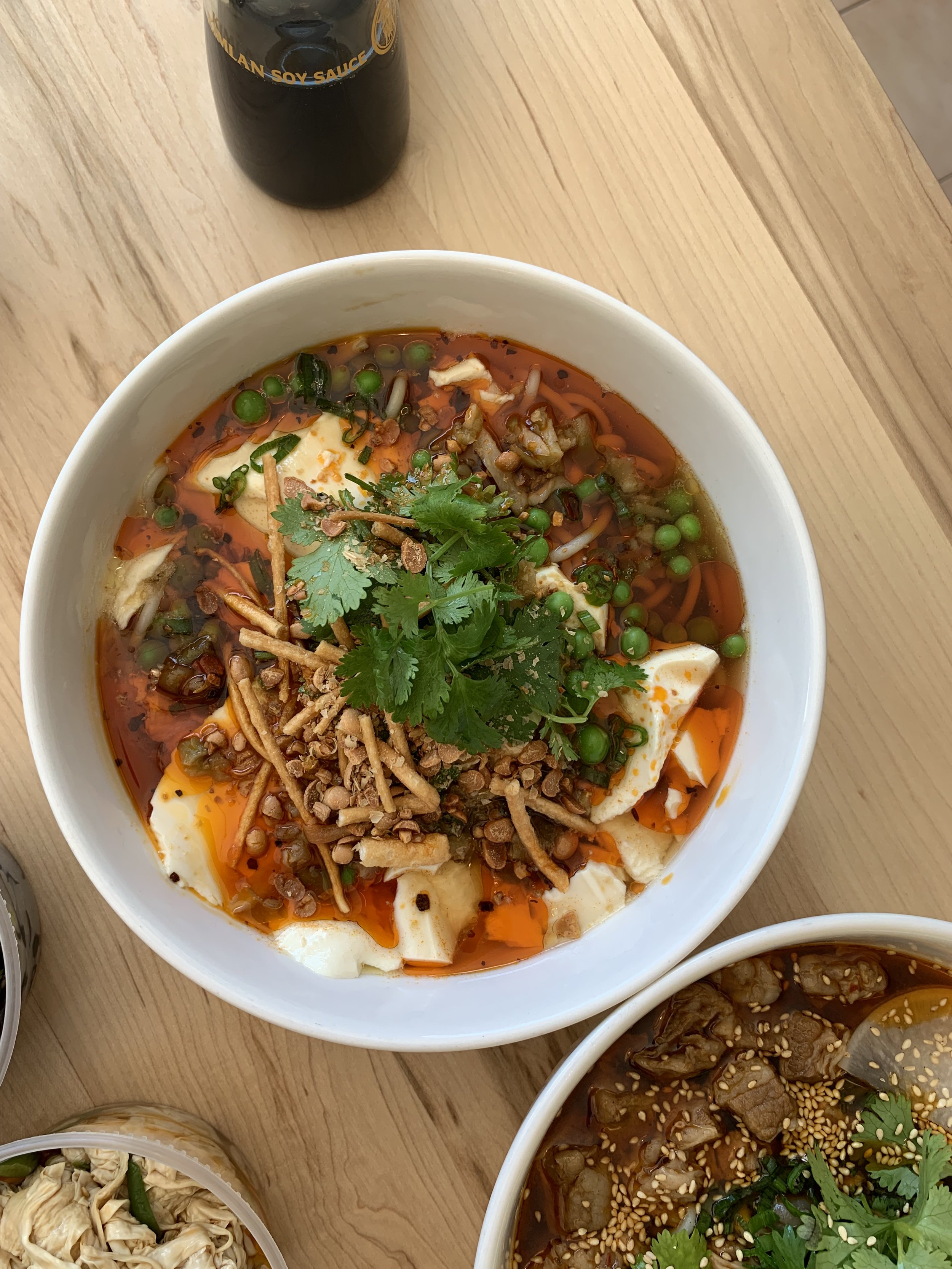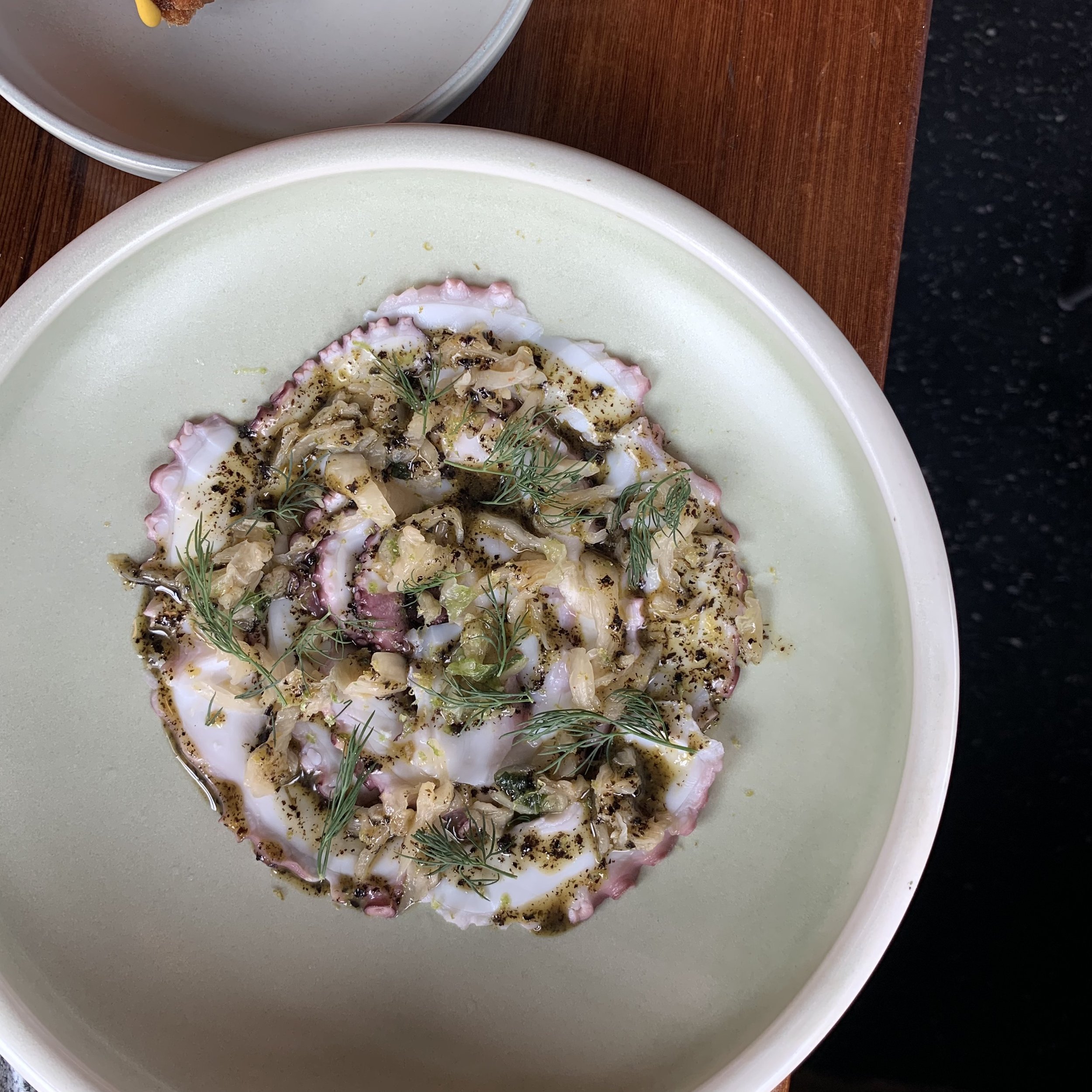17 cities, 23,000 kilometres, one undercover writer — I zigzagged across the country to pick Canada’s Best New Restaurants 2022
The noodles from Chinese épicerie J’ai Feng that put me on a second flight to Montreal.
When I tell people I spent a good part of my summer traversing the country to select Canada’s Best New Restaurants for Air Canada’s enRoute magazine, a look of envy passes over their faces. The response I get is usually along the lines of “How do I get that job?”
The assignment, which I took on in 2018, 2019 and again this year, after a pandemic hiatus, does come with a certain presumed glamour. And it is kind of thrilling in a gastronomic spy caper kind of way.
There’s the selection of my undercover nom de guerre, the furtive note-taking, the ever-present risk of blowing my cover, like when my husband forgot my pseudonym and blurted out my actual name at the reception stand. And then there’s all that glorious food and drink.
License plate, Yellowknife, Northwest Territories.
But the job involves a lot of work, too, including extensive due diligence before each visit. The whole endeavour is also a giant logistics puzzle, which this year meant booking a glut of restaurant reservations — some so coveted, they’re nearly impossible to land — across 17 cities, and co-ordinating matching plane, car and hotel reservations. (Luckily for me, a resourceful staffer handles all travel matters.)
Making my Byzantine reservations schedule work often means zigzagging back and forth across the country. Unforeseen events can add kilometres, too, like the sudden Canada Day lunchtime closure of a Montreal noodle joint, which I realized moments before catching my Uber there. I flew back to Toronto that afternoon for a dinner reservation, then rose early for an 8 a.m. flight back to Montreal — just for a bowl of (worth it!) noodles at chef Anita Feng’s four-stool counter, J’ai Feng. Partly due to twisted logistics, I logged more than 23,000 kilometres of travel in a little over a month.
The enRoute assignment is a great perch from which to spot restaurant trends. Pay equity and work-life balance, for example, are issues that weigh on chefs’ and owners’ minds these days.
At 20 Victoria in Toronto, which ranked No. 1 this year, starting pay is $65,000 a year for a 12-hour, four-day work week, with three weeks of paid vacation, though the majority of staff earns more than that base pay. There’s also a no-tipping policy, which increased pay equity. “This whole thing has been kind of an experiment and is a work-in-progress,” says proprietor Chris White.
So far the experiment is working for White and others. “All my friends who are running very good restaurants and I talk about is how to be better, how to resolve staffing issues,” he says. “The ones succeeding are paying people better and treating people better … As an employer, it’s easier to talk about excellence and set expectations high when you know you’re compensating people.”
The view from Parcelles, Eastern Townships, Quebec.
Wood-fired pizza blanche, at Parcelles, topped with tatsoi, bok choy and, Bete-a-Seguin cheese.
Another trend I was happy to see is that while many restaurant claims of being “local and sustainable” are more marketing than reality, places like Restaurant Alentours in Quebec City and Parcelles in Austin, Que., really walk the walk.
At Restaurant Alentours, chef Tim Moroney’s adherence to a no-waste, all locally sourced menu (everything but salt, yeast and milk come from within 150 kilometres of the restaurant) might seem borderline fanatical, if his food were not so good. At Parcelles, chef Dominic Labelle has transformed a parcel of land overlooking Lake Memphremagog into a biodiverse wonderland of vegetables, fruit orchard and farm animals, which he draws on for his idyllic summer picnics of wood-fired pizzas and local delicacies.
We flipped over this wild rice ice cream from chef Scott Iserhoff at Pei Pei Chei Ow in Edmonton. The secret is toasting the rice until it bursts open, then soaking the grains in cream until the liquid is shot through with a nutty roasted rice aroma.
My gastronomic travels also allowed me to take the measure of Indigenous cuisine in Canada. Our national panel of experts — chefs, restaurateurs, food writers and others in the hospitality industry, whose reams of nominations are the starting point for our list — looks carefully for newcomers in this category. But the truth is as a country, we could do better in supporting interpreters of Indigenous cuisine. The lone entry on my longlist of 30 restaurants is Edmonton’s Pei Pei Chei Ow.
At the small café, inside the Indigenous Whiskeyjack Art House, gifted chef/owner Scott Iserhoff is biding his time, serving deeply flavoured duck stew and three-berry brisket sandwiches, teaching Indigenous youths to cook on the side, and figuring out how to open his own place one day. I hope more of us will support Indigenous restaurants as a way of getting to know ancient foodways and helping to heal our country’s deep historical wounds.
The beautiful and delicious octopus crudo at Jeju, with seaweed, perilla oil vinaigrette, lime, kimchi, and dill.
Yet I’m happy to see more chefs of colour than ever are expressing their identities on the plate. In addition to Iserhoff, there is Julio Guajardo (along with his wife, Kate Chomyshyn) at Top 10 restaurant Fonda Balam in Toronto; Emily Butcher at Nola in Winnipeg; Yunyoung and Sungeun Kim at Jeju in Tofino; and Bardia Ilbeiggi at Delara in Vancouver, to name just a few. For me, the more diversity the better.
Sign on Cheterman Beach, Tofino, Vancouver Island.
This gig has also given me a wide-angle window on breathtaking Canadian landscapes, from Tofino to St. John’s. The travel is one of my favourite parts of the job, though often there is scant time for a leisurely scenic drive or hike. When an unanticipated, hour-long closure of the Pacific Rim Highway delayed my drive from Tofino to Victoria’s airport, the contemplative road trip I expected turned into a white-knuckle race across the island — with snatched sidelong glances at the lush Pacific forests — as I hurtled toward my next flight and dinner.
Clothesline and garden, St. John’s, Newfoundland.
Despite all these adventures, the question I’m asked most often is “How do you eat all that food and drink and not gain weight?” Being a reviewer for Canada’s Best New Restaurants is a marathon one has to train for and learn how to negotiate. While it’s undeniably fun, I’m always happy to come home and adopt a simple Japanese diet of grilled fish, rice and vegetables until my body’s balance is restored.
My penultimate return trip, from Ottawa to Toronto.
Shortly after my return this year, my doctor happened to order a routine serum lipid profile. Looking at the numbers, he immediately doubled my cholesterol medication. I hope it’s a temporary bump up, but it’s a small price to pay for so much pleasure.
Nancy Matsumoto is also co-author of the new book “Exploring the World of Japanese Craft Sake: Rice, Water, Earth.”
Read this article at The Toronto Star.
Note: This version of the story contain more photos (all taken by me) than the original Star story, mainly to make it more lively, and because I had the photos and wanted to share them with you.










